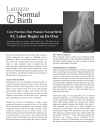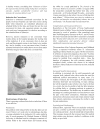#1: labor begins on its own
- PMID: 17273382
- PMCID: PMC1595196
- DOI: 10.1624/105812404X109474
#1: labor begins on its own
Abstract
In this position paper-one of six care practice papers published by Lamaze International and reprinted here with permission-the benefit of allowing labor to begin on its own is discussed and presented as an evidence-based practice that helps promote, protect, and support normal birth. The paper is written for childbearing women and their families. The accompanying commentary-written by a leading home-birth midwife and prominent national and international speaker on maternity care-describes further evidence of the disadvantages of inducing labor. The indications for and risks of induction are also explored. Lamaze International recommends that, unless there is a medical indication for induction, labor should be allowed to begin on its own.
References
-
- Fletcher H. M, Mitchell S, Simeon D, Frederick J, Brown D. Intravaginal misoprostol as a cervical ripening agent. British Journal of Obstetrics & Gynaecology. 1993;100:641–644. - PubMed
-
- Gaskin I. M. 2003. Ina May's guide to childbirth. New York: Bantam/Dell. - PubMed
-
- Mundle W. R, Young D. C. Vaginal misoprostol for induction of labor: A randomized controlled trial. Obstetrics & Gynecology. 1996;88:521–525. - PubMed
-
- Wing D. A, Jones M. M, Rahall A, Goodwin T. M, Paul R. H. A comparison of misoprostol and prostaglandin E2 gel for preinduction cervical ripening and labor induction. American Journal of Obstetrics & Gynecology. 1995;172:1804–1810. - PubMed
-
- Wing D. A, Paul R. H. A comparison of differing dosing regimens of vaginally administered misoprostol for preinduction cervical ripening and labor induction. American Journal of Obstetrics and Gynecology. 1996;175:158–164. - PubMed
LinkOut - more resources
Full Text Sources




